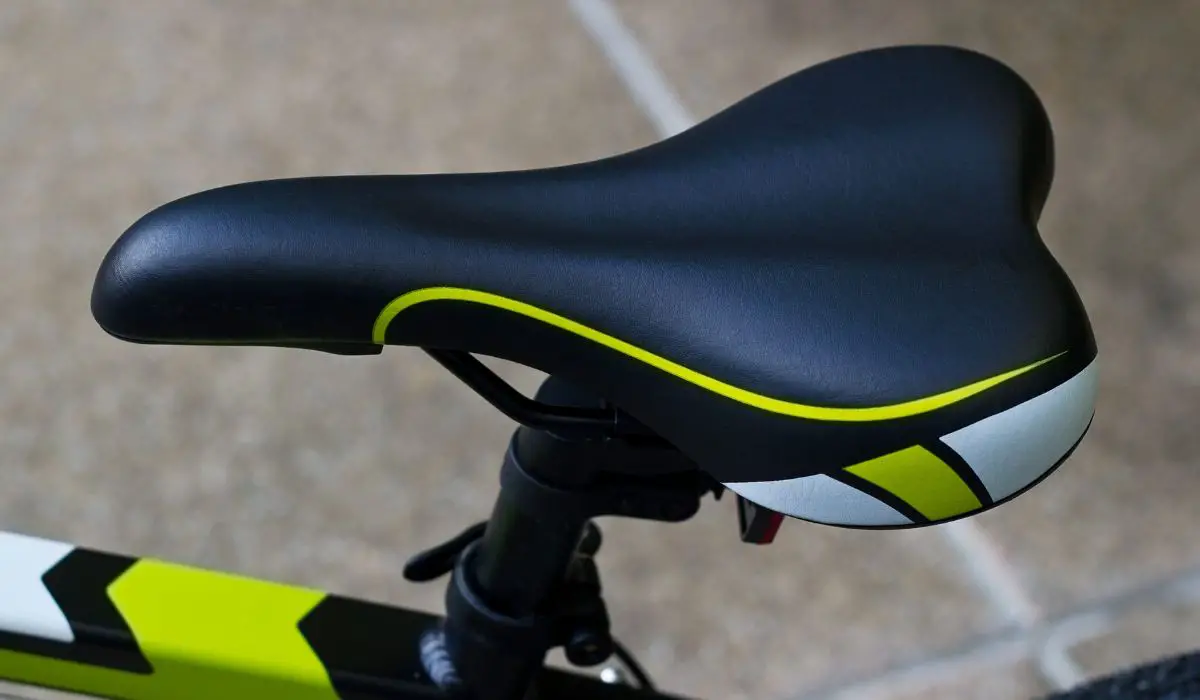


As any seasoned mountain biker will tell you, the thrill of conquering challenging trails often comes hand in hand with a less-than-pleasant reality: uncomfortable bike seats. If you’ve ever wondered why those sleek, purpose-built saddles can sometimes feel like instruments of torture, you’re not alone.
In this exploration, we’ll delve into the anatomy of this discomfort, revealing the factors that make mountain bike seats notoriously hard on your rear.
The answer to “Why are mountain bike seats so uncomfortable” isn’t a simple one. It’s a culmination of design considerations, riding conditions, and the delicate balance between support and freedom of movement. Mountain biking demands a unique blend of features from a saddle, which can inadvertently lead to discomfort during extended rides.
So, what are these factors that contribute to the discomfort? To truly understand, we’ll dissect the saddle’s design, explore the physical demands of mountain biking, and uncover ways to mitigate the pain.
While comfort may always be a relative term when it comes to bike seats, this journey will equip you with insights and solutions to make your rides a little less painful.
Read More:Can you ride a mountain bike on pavement
The Anatomy of Discomfort: Decoding Mountain Bike Seats



Mountain biking is a thrilling adventure, a communion with nature, and a test of your endurance. But there’s one aspect of this adrenaline-pumping sport that many riders can’t help but grimace at – the seemingly uncomfortable mountain bike seat.
If you’ve ever wondered why these saddles sometimes feel less than friendly, it’s time to explore the intricate anatomy of this discomfort.
Purpose-Driven Design:
The discomfort of mountain bike seats is not by accident; it’s by design. These saddles are crafted to address the unique demands of off-road riding. Unlike the wide, cushioned seats of leisure bikes, mountain bike saddles are narrow and streamlined.
Why? To allow for more leg movement and maneuverability when navigating rugged terrain.
Firmness and Support:
Another factor contributing to discomfort is the firmness of the saddle. While soft, plush seats may seem appealing, they can be counterproductive on a mountain bike. A firmer saddle provides better support and prevents your body from sinking into the center, which can lead to chafing and discomfort.
The Pressure Points:
Mountain biking subjects your body to various pressure points, especially in the sit bones and perineal area. These pressure points can cause discomfort, numbness, and even chafing during long rides. The narrow design of mountain bike seats can exacerbate this issue.
Finding the Right Fit:
One person’s ideal saddle might be another’s torture device. Finding the right mountain bike seat is often a matter of trial and error. Riders must consider their riding style, body shape, and personal comfort preferences when selecting a saddle.
Innovative Solutions:
Fortunately, the discomfort associated with mountain bike seats has prompted innovations in saddle design. Many manufacturers now offer saddles with ergonomic cutouts, pressure relief channels, and materials that provide a balance between comfort and support.
In conclusion, the discomfort of mountain bike seats is a nuanced issue, influenced by purpose-driven design, the need for firmness and support, pressure points, and individual preferences. While these seats may not offer plush comfort, they are tailored to enhance your riding experience on challenging trails.
As the saying goes in the mountain biking community, “Embrace the discomfort, conquer the trails.”
Read More: Can bike riding cause prostate problem
Designing for Demands: Why Mountain Bike Saddles Are Different
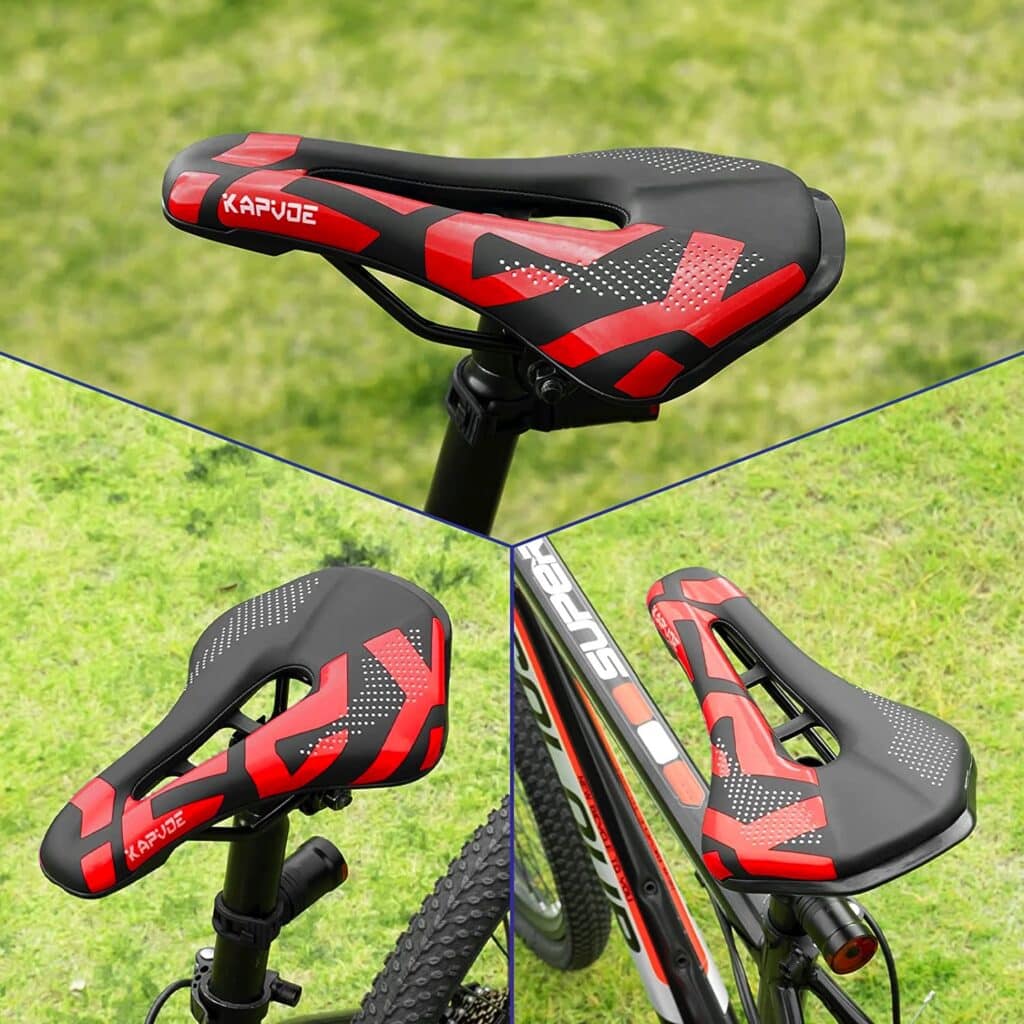


When it comes to mountain biking, comfort is often sacrificed in favor of performance. One of the most noticeable areas where this trade-off occurs is the mountain bike saddle. These narrow, sleek seats are often accused of being uncomfortable, but there’s a method to the madness.
In this exploration, we’ll dive into the design philosophy behind mountain bike saddles and understand why they are distinct from the plush seats found on other types of bikes.
Streamlined for Agility:
Mountain biking is a dynamic and technical sport that demands agility. The narrow design of mountain bike saddles is intentional. It allows riders to shift their weight quickly, make precise movements, and navigate challenging terrains without interference.
The streamlined profile reduces friction and resistance, crucial for maintaining speed and control.
Freedom of Movement:
Another critical aspect of mountain bike saddle design is freedom of movement. Unlike leisure or cruiser bikes where riders sit in an upright position, mountain bikers often shift their weight forward and backward.
A narrow saddle permits this movement, ensuring that riders can adjust their position for climbs, descents, and technical sections.
Durability and Lightweight:
Mountain bike saddles are built to withstand rugged conditions. They are constructed with durability in mind, as they need to endure the jolts, impacts, and occasional crashes that come with off-road riding.
At the same time, they are lightweight to keep the overall bike weight down, enhancing maneuverability.
Firmness Over Softness:
While plush, cushioned seats might seem more inviting, they are not suitable for mountain biking. Mountain bike saddles tend to be firmer to provide better support and prevent discomfort on longer rides.
Soft seats can lead to pressure points, chafing, and even reduced control on technical descents.
Rider-Specific Options:
Recognizing that one size does not fit all, mountain bike saddle manufacturers offer a variety of shapes and sizes. Riders can choose saddles that best suit their body shape, riding style, and comfort preferences. This customization allows riders to optimize their saddle for performance and comfort.
In conclusion, the design of mountain bike saddles is a result of purpose-driven engineering. These seats prioritize agility, freedom of movement, durability, and firmness to enhance the overall riding experience on challenging trails.
While they may not offer the plush comfort of leisure bike seats, they are the perfect companions for those seeking the thrill of conquering rugged terrains and technical descents.
Read More: Is biking good for knee pain
Balancing Act: Support vs. Freedom of Movement in Mountain Bike Saddles
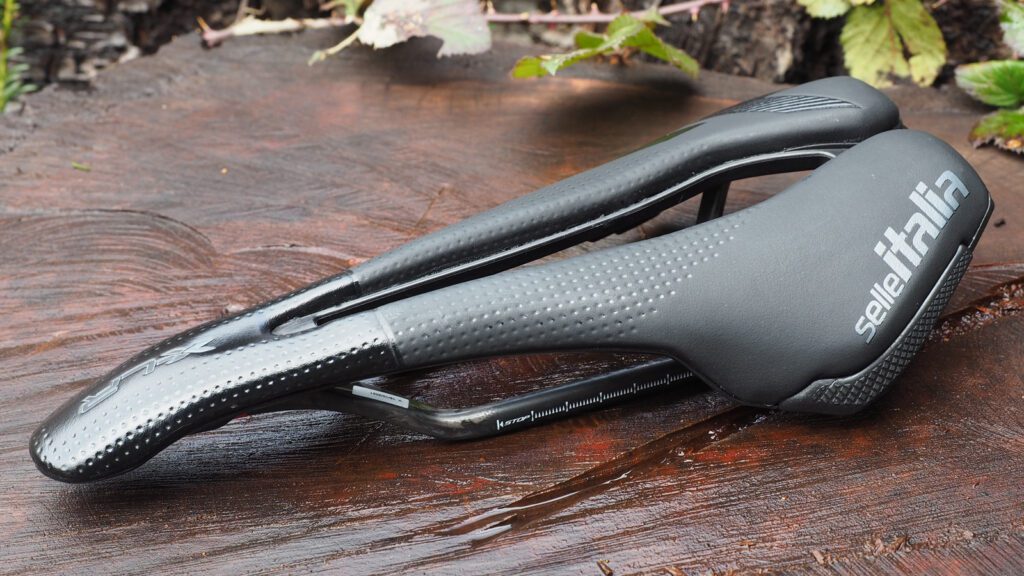


Mountain biking is a sport of balance, not just in the literal sense of staying upright on challenging terrain, but also in the delicate equilibrium between support and freedom of movement. Nowhere is this balance more evident than in the design of mountain bike saddles.
These slim, purpose-built seats are a testament to the art of finding harmony between stability and agility. In this exploration, we’ll delve into this intriguing balance, which is essential for both comfort and performance in the world of mountain biking,
The Need for Stability:
Mountain bike saddles, though often accused of being uncomfortable, are meticulously designed to provide stability. Stability is crucial when navigating rugged trails, steep descents, and technical sections.
A stable saddle ensures that the rider’s weight is distributed evenly, enhancing control and reducing the risk of losing balance.
The Call for Agility:
At the same time, mountain bikers require the freedom to move. Unlike road biking, where riders maintain a relatively static position, mountain bikers constantly shift their weight forward, backward, and side to side.
This dynamic movement is essential for tackling obstacles, making quick maneuvers, and maintaining balance. A saddle that restricts movement would hinder a rider’s ability to respond to changing terrain.
Narrow Profile and Ergonomics:
The narrow profile of mountain bike saddles allows for more natural leg movement, facilitating quick adjustments during climbs and descents. Additionally, ergonomic design features such as cutouts and pressure-relief channels help reduce pressure on sensitive areas, enhancing overall comfort without sacrificing stability.
Personalized Choices:
Recognizing that riders have different preferences and body shapes, saddle manufacturers offer a range of options. Riders can choose saddles that align with their individual needs, whether they prioritize stability, freedom of movement, or a blend of both.
Achieving the Ideal Balance:
In essence, the design of mountain bike saddles is a quest to find the ideal balance between support and freedom of movement. It’s a testament to the ingenuity of engineers and designers who understand that in the world of mountain biking, comfort and control must coexist.
While these saddles may not resemble the plush seats of leisure bikes, they are finely tuned instruments that enable riders to conquer the most challenging trails with confidence and agility.
In conclusion, mountain bike saddles are the embodiment of a meticulous balancing act. They provide stability when needed and freedom of movement when demanded by the terrain.
As you embark on your next off-road adventure, take a moment to appreciate the remarkable harmony achieved by these slim, purpose-driven seats that enhance your mountain biking experience.
Read More: Is mountain bike good for beginners
The Impact of Riding Conditions on Seat Comfort: Exploring the Unpredictable Terrain



Mountain biking isn’t for the faint of heart. It’s a sport that thrives on unpredictability and challenges. As riders take on diverse terrains, they quickly realize that the comfort of their mountain bike seat is subject to change based on where they’re riding.
In this exploration, we delve into the significant impact that riding conditions have on seat comfort and how riders can adapt to ensure a smoother, less painful ride.
The Varied Terrain:
Mountain biking encompasses a vast array of terrains – from smooth singletrack trails to root-laden forests, rocky descents, and muddy ascents. Each terrain places unique demands on both the rider and the bike seat.
The Jolts and Vibrations:
Riding over rough terrain can lead to jolts and vibrations that transmit directly to the saddle. This can be particularly jarring and uncomfortable, especially on long rides. It’s not uncommon for riders to feel fatigued not just from pedaling but from absorbing these shocks through their seat.
Uphill and Downhill Challenges:
The angles of ascent and descent on a mountain trail can vary drastically. Climbing uphill requires more weight to be distributed to the rear of the saddle, which can cause discomfort in the sit bones and perineal area.
Conversely, downhill sections require riders to shift forward, which can also lead to discomfort.
Wet and Muddy Conditions:
Rain-soaked trails and muddy paths can make for an entirely different riding experience. Wet conditions can lead to a slippery saddle, making it challenging to maintain a stable position and potentially causing discomfort from excessive movement.
Adaptation and Preparation:
While riding conditions can be unpredictable, riders can take steps to adapt and prepare for varying terrain. Choosing the right saddle that matches the type of riding you do most frequently can help mitigate discomfort.
Additionally, proper bike setup, including adjusting saddle height and angle, can make a significant difference.
The Love-Hate Relationship:
Mountain bikers often have a love-hate relationship with their saddles. While they may grumble about discomfort during a ride, they also appreciate the role the saddle plays in providing stability and control.
It’s a necessary companion on the trail, albeit one that occasionally demands endurance from the rider.
In conclusion, the impact of riding conditions on seat comfort is a reality every mountain biker faces. The sport’s inherent unpredictability is part of its charm, and adapting to changing terrains is essential.
While discomfort may be inevitable on occasion, it’s a small price to pay for the thrilling adventure of conquering challenging trails and experiencing the beauty of the great outdoors from a unique perspective.
Read More: Is mtb good for commuting
Saddle Materials and Shapes: Finding the Right Fit for Your Ride



When it comes to mountain biking, comfort and performance often hinge on one crucial component: the saddle. Yet, the world of mountain bike saddles is far from one-size-fits-all. In this exploration, we’ll take a closer look at the materials and shapes that make up these critical components, and how finding the right fit can elevate your riding experience to new heights.
The Variety of Materials:
Mountain bike saddles come in a variety of materials, each with its unique characteristics:
- Synthetic Materials:
Many saddles are constructed using synthetic materials such as nylon or plastic. These materials are durable, lightweight, and can withstand the rigors of off-road riding. They are often used in performance-oriented saddles.
- Leather:
Some riders prefer the timeless elegance and comfort of leather saddles. While leather saddles require more care and maintenance, they can provide a supple and comfortable ride over time.
- Gel Inserts:
Gel inserts are often integrated into saddle designs to provide additional cushioning and comfort. They can be particularly useful for riders seeking a more forgiving ride.
- Carbon Fiber:
For riders focused on weight savings and performance, carbon fiber rails and shells are an option. They offer an excellent strength-to-weight ratio, making for lightweight yet sturdy saddles.
The Importance of Shape:
Saddle shape plays a crucial role in comfort. Shapes can vary widely, but some common considerations include:
- Width:
Wider saddles distribute pressure over a broader area, which can reduce discomfort. However, excessively wide saddles can hinder leg movement.
- Length:
Longer saddles provide more room for adjustment during climbs and descents. Shorter saddles may be preferred by riders who frequently shift their weight.
- Cutouts and Channels:
Many saddles feature cutouts or channels in the center to relieve pressure on sensitive areas. These designs can significantly enhance comfort, especially during long rides.
Finding Your Fit:
Selecting the right saddle often requires a bit of experimentation. Riders must consider their body shape, riding style, and personal comfort preferences. Some bike shops even offer saddle fitting services to help riders find the ideal match.
Rider-Specific Saddle Options:
Recognizing the diversity of riders and their needs, saddle manufacturers offer a wide range of options. Whether you’re a downhill daredevil, an endurance enthusiast, or somewhere in between, there’s likely a saddle that suits your style.
In conclusion, the world of mountain bike saddles is as diverse as the trails you’ll encounter. Materials and shapes vary to cater to the specific demands of off-road riding. As you embark on your next mountain biking adventure, consider the materials and shapes that align with your comfort and performance priorities.
Finding the right fit can make all the difference in ensuring that your ride is both exhilarating and comfortable.
Pain Points and Pressure: Understanding the Discomfort Zones on Mountain Bike Saddles
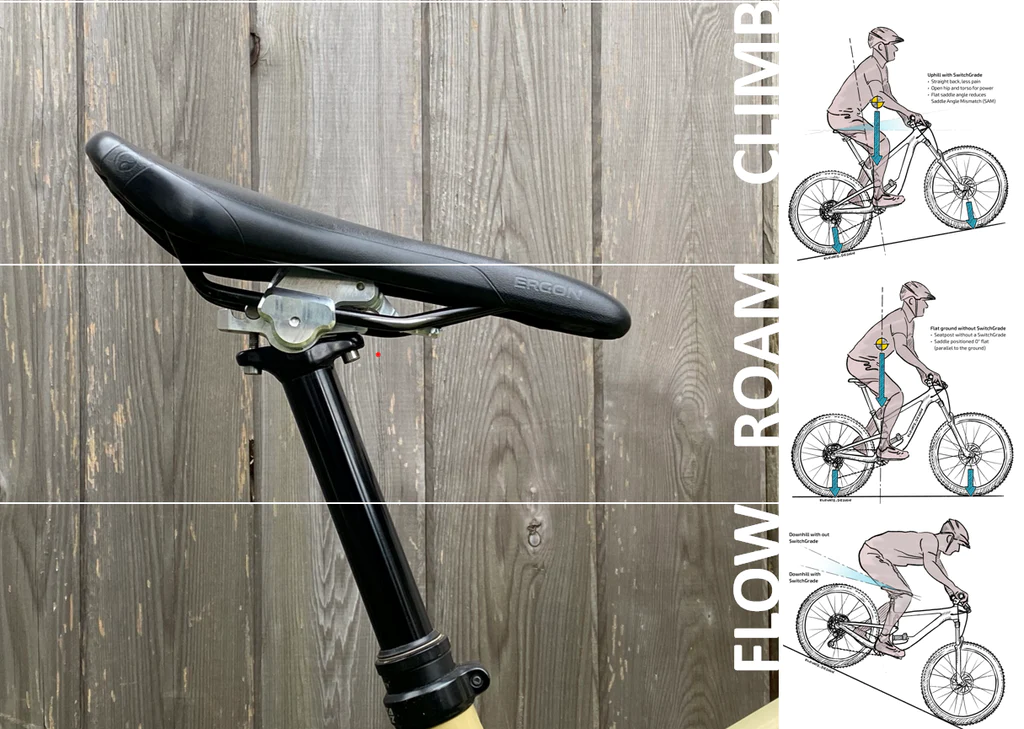


Mountain biking, with its exhilarating descents and challenging climbs, demands a lot from riders. Yet, one aspect that can leave even the most seasoned mountain biker wincing is the discomfort associated with the saddle.
To truly understand this discomfort, we must explore the pain points and pressure areas that riders encounter on mountain bike saddles, shedding light on why finding the right seat is essential for a comfortable and enjoyable ride.
Sit Bones and Pressure Points:
Sit bones, scientifically known as the ischial tuberosities, are the bony parts of your pelvis that bear your body’s weight when you sit. On a bike saddle, these points should ideally be where most of your weight rests.
However, discomfort can arise when the saddle’s shape and padding don’t align with your sit bone width, leading to pressure points.
Perineal Area:
The perineal area, the region between the sit bones, is a sensitive part of the body that can suffer from numbness and discomfort due to prolonged pressure. This discomfort is often caused by inadequate saddle design or improper saddle tilt.
Chafing and Friction:
Mountain biking, especially on rugged trails, can result in frequent changes in riding position. These changes, combined with the friction caused by synthetic clothing and sweat, can lead to chafing and skin irritation.
Numbness and Blood Flow:
Pressure on sensitive nerves and blood vessels in the perineal area can cause numbness and reduced blood flow. This can be not only uncomfortable but also potentially harmful in the long run.
Finding Relief:
Understanding these discomfort zones is the first step in finding relief. To address these issues, riders can:
- Choose a saddle that matches their sit bone width to distribute pressure evenly.
- Opt for saddles with cutouts or pressure-relief channels to alleviate perineal pressure.
- Experiment with saddle tilt and position to reduce friction and chafing.
- Take regular breaks during long rides to relieve pressure on sensitive areas.
- Consider padded shorts or chamois to reduce friction and moisture buildup.
In conclusion, the discomfort associated with mountain bike saddles is often due to the pressure points and pain zones riders encounter during their adventures. By understanding these areas and taking steps to mitigate discomfort, riders can enjoy their time on the trail without the distraction of saddle-related pains.
A well-fitted and thoughtfully designed saddle can make all the difference in ensuring that your mountain biking experience remains enjoyable and pain-free.
Ergonomic Innovations: Advances in Mountain Bike Seat Design
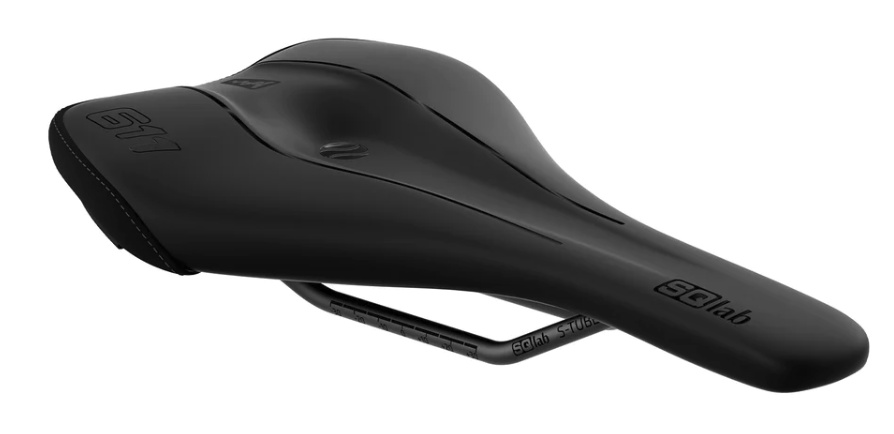


Mountain biking, a sport of adventure and adrenaline, demands a lot from riders, including the ability to endure long and sometimes grueling rides. While many factors contribute to a comfortable ride, one element that plays a crucial role is the mountain bike seat.
In recent years, saddle manufacturers have embraced ergonomic innovations to enhance rider comfort and performance. In this exploration, we’ll delve into these advances in mountain bike seat design and how they’re revolutionizing the way riders experience the trail.
Pressure-Relief Channels and Cutouts:
One of the most significant innovations in mountain bike seat design is the incorporation of pressure-relief channels and cutouts. These features alleviate pressure on sensitive areas like the perineal region and reduce the risk of numbness and discomfort during long rides.
They allow for better blood flow and minimize the potential for chafing and friction.
Shaping for Support and Freedom:
Modern mountain bike saddles are designed with careful consideration of the rider’s anatomy. They feature shapes that offer support where it’s needed, such as under the sit bones, while allowing freedom of movement for adjustments during climbs, descents, and technical sections. These designs balance stability with agility.
Adjustable Rails and Angles:
Ergonomic innovations extend beyond saddle shape. Many mountain bike seats now come with adjustable rails and angles, allowing riders to fine-tune their saddle position to match their riding style and body geometry. This customization enhances comfort and control on the trail.
Materials for Comfort and Durability:
Saddle materials have also seen advancements. Manufacturers use a variety of materials, from synthetic composites to lightweight carbon fiber, to strike a balance between comfort and durability. These materials are chosen to withstand the rigors of off-road riding while providing a supportive yet forgiving ride.
Personalization Options:
Recognizing that riders have diverse preferences and needs, saddle manufacturers offer a range of options. Riders can choose saddles tailored to their body shape, riding style, and comfort preferences. This personalization ensures that every rider can find their perfect fit.
Testing and Feedback:
Innovation in saddle design is often driven by rigorous testing and rider feedback. Manufacturers collaborate with professional riders and use data-driven insights to refine their designs. This iterative process results in saddles that meet the evolving demands of modern mountain biking.
In conclusion, the ergonomic innovations in mountain bike seat design have ushered in a new era of comfort and performance. These advances cater to the needs of riders tackling challenging terrains, ensuring that discomfort and saddle-related issues become a thing of the past.
As you embark on your next mountain biking adventure, consider the benefits of these innovations and how they can elevate your ride to new heights of enjoyment and endurance.
Solutions for Soreness: Tips to Improve Mountain Bike Seat Comfort
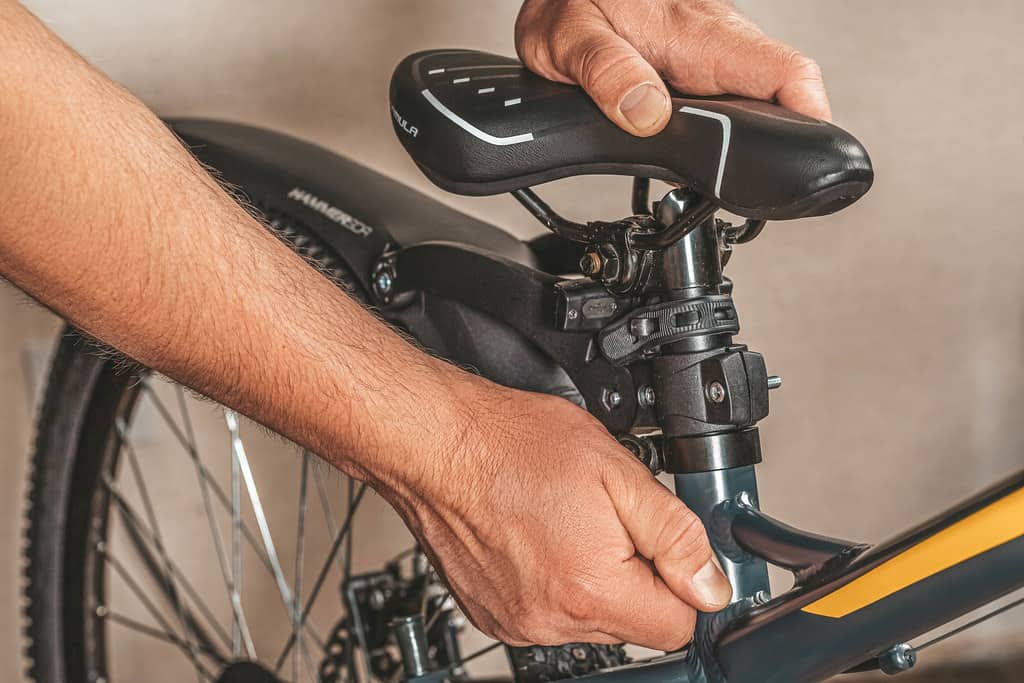


Mountain biking is an exhilarating pursuit, but even the most passionate riders will admit that saddle soreness can put a damper on their adventures. The discomfort associated with mountain bike seats is a common challenge, but the good news is that there are solutions to improve your seat comfort.
In this article, we’ll explore various tips and strategies that can help you enjoy longer, more comfortable rides on the trails.
Invest in Quality Shorts:
One of the easiest ways to enhance seat comfort is by investing in quality cycling shorts with padded chamois. These shorts provide extra cushioning and reduce friction, helping to minimize chafing and discomfort.
Choose the Right Saddle:
Finding the right saddle for your body shape and riding style is paramount. Consider getting professionally fitted at a bike shop or experimenting with different saddle shapes and widths until you find one that suits you. Modern saddles often feature ergonomic designs and pressure-relief channels for added comfort.
Saddle Height and Position:
Adjusting your saddle height and position can make a significant difference in comfort. Ensure your saddle is level or slightly tilted downward to prevent unnecessary pressure on sensitive areas. Also, make sure your saddle is at the appropriate height to allow for efficient pedaling.
Padded Gloves and Grips:
Padded gloves can reduce the vibrations and shocks transmitted from the handlebars to your hands and, indirectly, to your seat. Similarly, ergonomic grips can provide better hand comfort and reduce upper body tension, which can affect your sitting comfort.
Stand Up and Move:
During your rides, stand up on the pedals periodically to relieve pressure on your sit bones and perineal area. Shifting your weight while riding, especially when transitioning between climbs and descents, can help prevent discomfort.
Chamois Cream:
Chamois cream is a cyclist’s secret weapon against chafing and discomfort. Applying a small amount to the chamois or your skin can reduce friction and provide a soothing layer of protection.
Gradual Conditioning:
If you’re new to mountain biking or haven’t been riding for a while, your body may need time to adapt to the saddle. Gradually increase your riding time and distance to condition your sit bones and reduce soreness.
Regular Maintenance:
Lastly, don’t forget to maintain your bike and saddle. Check for loose bolts or components that could affect saddle stability. A well-maintained bike can contribute to a more comfortable ride.
In conclusion, while some level of saddle discomfort may be unavoidable during mountain biking, these solutions can significantly improve your seat comfort and allow you to enjoy longer pain-free rides.
Remember that what works best for one rider may not work for another, so don’t hesitate to experiment with different strategies and products until you find the perfect combination for your needs. Happy trails!
Conclusion:
In the world of mountain biking, where thrilling descents and challenging climbs await around every bend, there’s an uncomfortable truth that riders have come to accept: mountain bike seats can be, well, uncomfortable.
Yet, this discomfort is not a consequence of poor design or negligence; rather, it’s a product of the unique demands that this exhilarating sport places on both rider and equipment.
The discomfort associated with mountain bike seats stems from the need for a delicate balance between support and freedom of movement. Mountain bikers demand stability to tackle rugged terrains and maintain control during technical descents.
However, they also require the freedom to shift their weight, make quick adjustments, and respond to changing landscapes—a level of agility that plush, wide seats simply cannot accommodate.
Fortunately, the mountain biking community is not content to endure discomfort silently. Riders, engineers, and saddle manufacturers have come together to explore innovative solutions that enhance seat comfort.
These include ergonomic designs, pressure-relief channels, chamois shorts, and even specialized creams to combat chafing.
While the discomfort associated with mountain bike seats may persist to some extent, riders can take heart in the fact that there are practical ways to mitigate it. By investing in quality gear, making thoughtful adjustments, and employing strategies to enhance comfort, riders can continue to pursue their passion for mountain biking without being derailed by saddle soreness.
In essence, the discomfort of mountain bike seats is a reminder of the challenges and rewards that this sport offers. It’s a small price to pay for the thrill of conquering rugged trails and exploring the great outdoors from a unique perspective.
So, saddle up, embrace the adventure, and remember that even the most uncomfortable seats can be the starting point for unforgettable journeys.
FAQs:
Why do mountain bike seats feel so hard?
Many mountain bike seats are designed to be firm to provide stability and support on rough terrains. However, this firmness can lead to discomfort during long rides.
Can I use a softer seat for my mountain bike?
While softer seats may seem more comfortable, they can cause issues like chafing and reduced control on challenging trails. It’s essential to find a balance between comfort and stability.
How can I reduce saddle soreness on my mountain bike?
Strategies include adjusting your saddle position, investing in padded shorts, using chamois cream to reduce friction, and gradually conditioning your body for longer rides.
Are there specific mountain bike seats for women to address discomfort?
Yes, some manufacturers offer women-specific mountain bike seats designed to accommodate anatomical differences and reduce discomfort.
Is discomfort while mountain biking normal?
Some discomfort is common, especially for beginners or riders on longer rides. However, excessive or persistent discomfort may indicate the need for adjustments or a different saddle.



Welcome to Bikegenics, where passion meets performance! We are a leading online destination for all things related to mountain biking, dedicated to providing you with top-notch gear, expert advice, and an immersive community to fuel your two-wheeled adventures. With a commitment to excellence and a deep love for the sport, we strive to elevate your biking experience to new heights.
